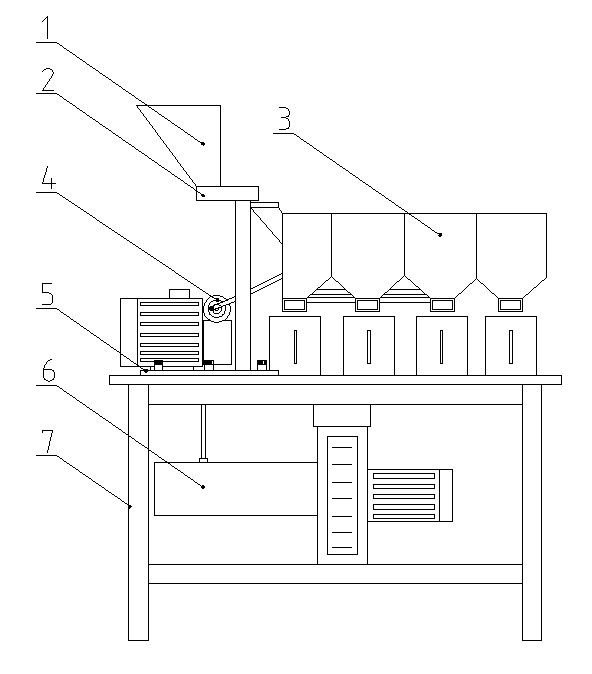There are two common symptoms. The top of affected ear infected with Fusarium graminearum turns pink, and pink to pale white mycelium develops among the grains; the ear of the victim suffers from early rot; the sputum of diseased ear adheres tightly to the ear and the ear is associated with A layer of lavender to light pink moldy layer grows between the lobes, sometimes the diseased part is blue and black, which is the germ capsule shell. The ear of the late growth period of corn infected by beading clinging, only individual or partial seed disease, diseased grains easily broken. The diseased granules grow on a layer of pink moldy material, mostly microspore of pathogens, and sometimes have long orange-yellow spot-like mucilages, that is, viscous conidiospores of pathogenic bacteria. The fungus likes to grow and reproduce in the groove after the earworm or corn borer damage. When the humidity is high, it also harms male flowers and leaf sheaths. (right)
There are two kinds of pathogens: Fusarium graminearum Schwl called Fusarium graminearum, and the sexual state is Gibberella zear Schw. Petch. Called Gibberella; Fusarium moniliforme (Sheld.) S. Et H. Called Fusarium moniliforme, with the status of Gibberella fujikuroi (Saw.) Wr. It is called Fujikura. Both Gibberella zeae and Fusarium tanshini are Ascomycotina subphylum fungi. According to Yunnan Yuxi Plant Protection Station, the main pathogen of corn grain rot in Yuxi area is Fusarium graminearum, with a separation rate of 90%. In addition Helminthosporium Vllstr. is the pathogen of the disease, the separation rate of 5.1%.
Transmission routes and disease conditions The above-mentioned Fusarium graminearum and Fusarium moniliforme infested corn ear to cause ear rot, and infected corn stems caused stem rot. Drought and warm climate are conducive to the expansion and prevalence of corn rot caused by Fusarium graminearum. When corn produces a growth laceration or corn earworms, corn borer and Other pests cause wounds to be susceptible to disease. In addition, some corn hybrids with high lysine susceptibility to F. frondosa head rot.
Control methods (1) Selection of disease-resistant varieties According to the local climate, choose from local conditions, and constantly replace new varieties, and constantly expand the planting area of ​​disease-resistant varieties. In regions where corn ear rot, large leaf spot, small spot disease, and head smut are mixed, good hybrids newly selected in recent years can be used. Such as white, jade single 6, Danyu 14, low three top, Shen 5, Wu 109, Wu 117, 7943, Kyrgyzstan 815, B70, 337, Va35, V dwarf 141, white C 2-9, CB5 , 冀 524, Bao 102, Shuang Tang, double won, Shou system 10, Dan Zaobai, Xinhuang 4,360, 5003, Zhang Dan 25l, more yellow 1, Shen 219, 6050, Cheng 191, Xu 3l, Van Rong 2. Beijing System 01, Zheng Zhenghuang, Huang 204, drought-resistant large grain yellow, plant shop 112, 6009, Jinsui 9, Zhongxing 14 and so on. (2) Change the rotation. (3) Strengthen field management Increase the application of potash fertilizer or nitrogen, phosphorus, and potassium fertilizers at the jointing or booting stage of corn to enhance the disease resistance. (4) For other methods, see Rhizoctonia ear rot.
The 5XZ-L laboratory Gravity Separator is used for separating seeds by specific gravity difference. It effectively separates granule with heavy specific gravity ( as gravel, soil particles), and granule with light specific gravity (as mildewed seeds, seeds damaged by worms).
Working principle:
The lab gravity separator sieve bed is triangular shape. On the sieve bed, there are more aluminum punching holes under the hopper area. This design will help raw material stratification.
By the effect of the sieve bed vibration and air blowing from bottom, the raw material is well separated to different ranks. The material discharge outlets are at one side. Outlets are for light impurity, mixing material, good seeds. There are flexible plates on outlets end. These plates can be adjusted to divide area then getting desired sorting effect.
Feature:
Laboratory Gravity Separator's sorting base on grain
density difference. The gravity separator table is triangular structure. The gravity separator table vertical angle, horizontal angle, vibration frequency,
bottom air blower volume are all adjustable. This can meet different dimension
/density seed sorting requirements. By
using the gravity separator, you will seeds density distribution of this batch
of seeds. It is an important seeds studying equipment.
Laboratory gravity separator construction:

1. Feeding hopper
2. Electromagnetism vibration feeder
3. Gravity separator table
4. Driving rotation system
5. Control cabinet
6. Bottom fan
7. Machine frame
Name
Laboratory
seed gravity separator
Model
5XZ-L
Capacity
50 kg/h
Air
blower power
0.37 kw
Vibrating
power
0.13 kw
Vibration
frequency
0-600
times/min
Table
board inclination
0-3°
Dimension
1000×700×1440
mm

Lab Gravity Separator,Laboratory Wheat Mini Destoner,Small Capacity Destoner Machine,Laboratory Gravity Separator
SHIJIAZHUANG SYNMEC INTERNATIONAL TRADING LIMITED , https://www.seedgraincleaner.com